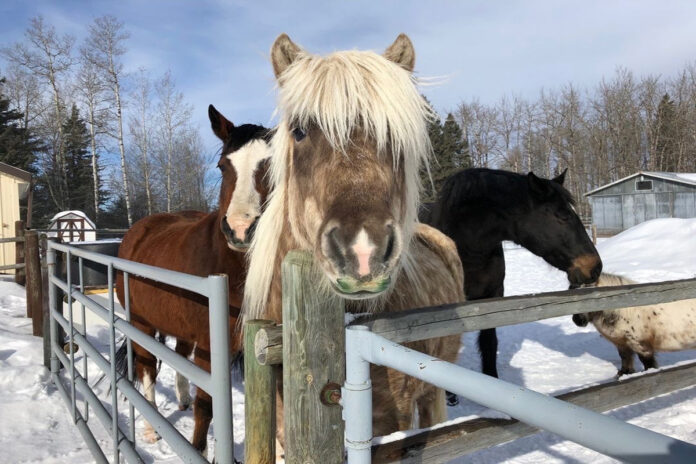
University of Calgary researchers have been studying the impact of different types of racetrack surfaces on chuckwagon horses competing at the Calgary Stampede, which returned this July after a two-year hiatus.
“The goal of that study was to look at what would be optimal conditions for the track at the Stampede for horses running at full speed … to avoid or prevent injuries,” said Renaud Léguillette, one of the researchers and U of C’s chairman in equine sports medicine.
To perform the study, the researchers attached sensors to different points of Thoroughbred horses’ legs to record their movement along various track surfaces. Chuckwagon racing specifically uses Thoroughbreds, and Léguillette said only using this breed of horse for the study eliminated outlier variables. He added that the results would have been vastly different if multiple breeds were tracked at the same time.
Originally planned for 2020, the study was put on hold until this summer due to COVID-19 and the subsequent cancellation of the Stampede in 2020 and 2021. In 2019, the researchers conducted a pilot project using Quarter Horses as a substitute breed so they could test their equipment prior to the study.
“We wanted some quiet horses [for the dry run],” Léguillette said. “Quarter Horses are very well-known for being more quiet … It was a step-by-step where we started with just a couple of horses that were quiet to see how the sensors [would] stay attached on a moving horse.”
The Thoroughbred horses in the actual study hit a top speed of 60 km/h, while the pilot study was done at a slower pace to properly calibrate the equipment. Léguillette said the results would also have changed if multiple riders were selected for the study. The researchers chose only one and randomly picked which of the 12 horses the rider used for each test.
“In chuckwagon races, horses are forced to pull carts in a dangerous situation in which they often collide.”
Despite studies like this striving to make the Stampede safer for horses, Camille Labchuk, executive director for Canadian non-profit Animal Justice, said they’re only done to “humanewash” the event and convince the public that the animals are cared for while hiding the reality that they’re not.
“In chuckwagon races, horses are forced to pull carts in a dangerous situation in which they often collide,” she said.
Labchuk cited past incidents of racehorses dying or being gravely injured—the most recent in 2019 when six horses were euthanized at the Stampede. This July, another horse was euthanized following one of the event’s chuckwagon races.
“Rodeo events are designed to entertain humans by forcing cows and calves and horses into situations they would not choose to be in if they could make that choice for themselves,” Labchuk said.
She added that the events typically involve roping horses and coercing them into racing. Labchuk said bronc riding, for example, sees riders attach an “uncomfortable” flank strap around horses’ hindquarters to make them “buck out of frustration.”
Sandy Bell, president of the non-profit Alberta Equestrian Federation, said in an email that results from this study will show trainers and handlers how to take better care of their horses.
“The conclusion from the study will give the relevant stakeholders the important information that they need to make their sports safer for the equine and human athletes involved,” Bell said.
The study, which started on June 6, is now in the data analysis stage. Léguillette estimated it will be complete in three to six months and hopes to publish the findings in an open access journal.
Featured image provided by Sandy Bell.



